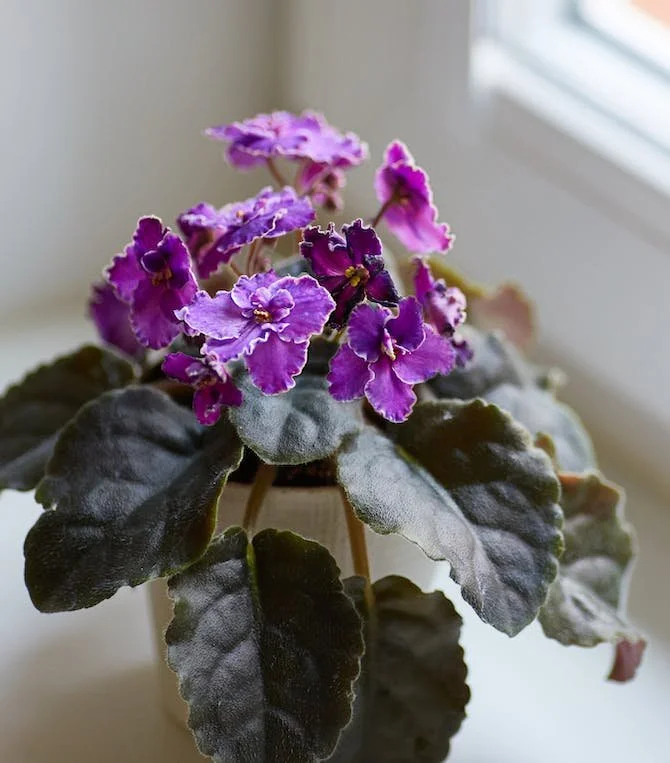African Violet
Saintpaulia ionantha Origin: Tanzania, East Africa
African Violets have been a popular houseplant in America since the 1930s. Compact, low and easy to care for, this plant has fuzzy leaves and clusters of purple, white or blue flowers. They are fairly slow-growing plants, and can be expected to live a long life with proper care.
Common Issues
Unusual coloring: Light green leaves indicate too much light or too much water; thin and dark green leaves indicate too little light.
Leaf rot: Leaves may rot if misted or kept wet for too long.
Lack of flowers: This may be due to insufficient light or fertilizer. Try moving your African Violet to a brighter spot.
Ring spot: Cold water may create white rings on your African Violets’ leaves. Consider letting tap water sit overnight before watering to ensure a safe temperature and let any chlorine evaporate.
Light: Aim for medium to bright, indirect sunlight. Be careful to never place your African Violet in direct sunlight, as its leaves may burn.
Water: Test the potting mix with your finger before watering; if the potting mix feels moist, wait and try again in a few days. You want to let the soil dry out slightly between watering.
Humidity: This plant prefers high humidity. In the mountains of Africa, the relative humidity is about 70-80 percent. As houseplants, African Violets should have at least 50-60 percent humidity.
Growth: African Violets have a distinctive rosette of dark green fuzzy leaves. Eventually, they will develop a short central trunk and produce small offshoots from the base or along the stem. These plants are sporadic bloomers and will produce flowers throughout the year with short rest periods between.
Soil: Keep it light and porous. An all-purpose potting mix should work just fine if it is well-draining, or cut it 50/50 with perlite or vermiculite.
Temperature: Average temperatures of around 65°F are ideal for African Violets. It’s important to avoid chilly window drafts during winter months as well as excessive summer heat.
Repotting: Repot every one to two years to refresh the soil if your plant is growing strongly. African Violets do not respond well to a lot of root disturbance.
Extra TLC: Consider bottom watering your African Violet. If watering from the top, be careful not to wet the leaves, as standing water can lead to fungal infections.

